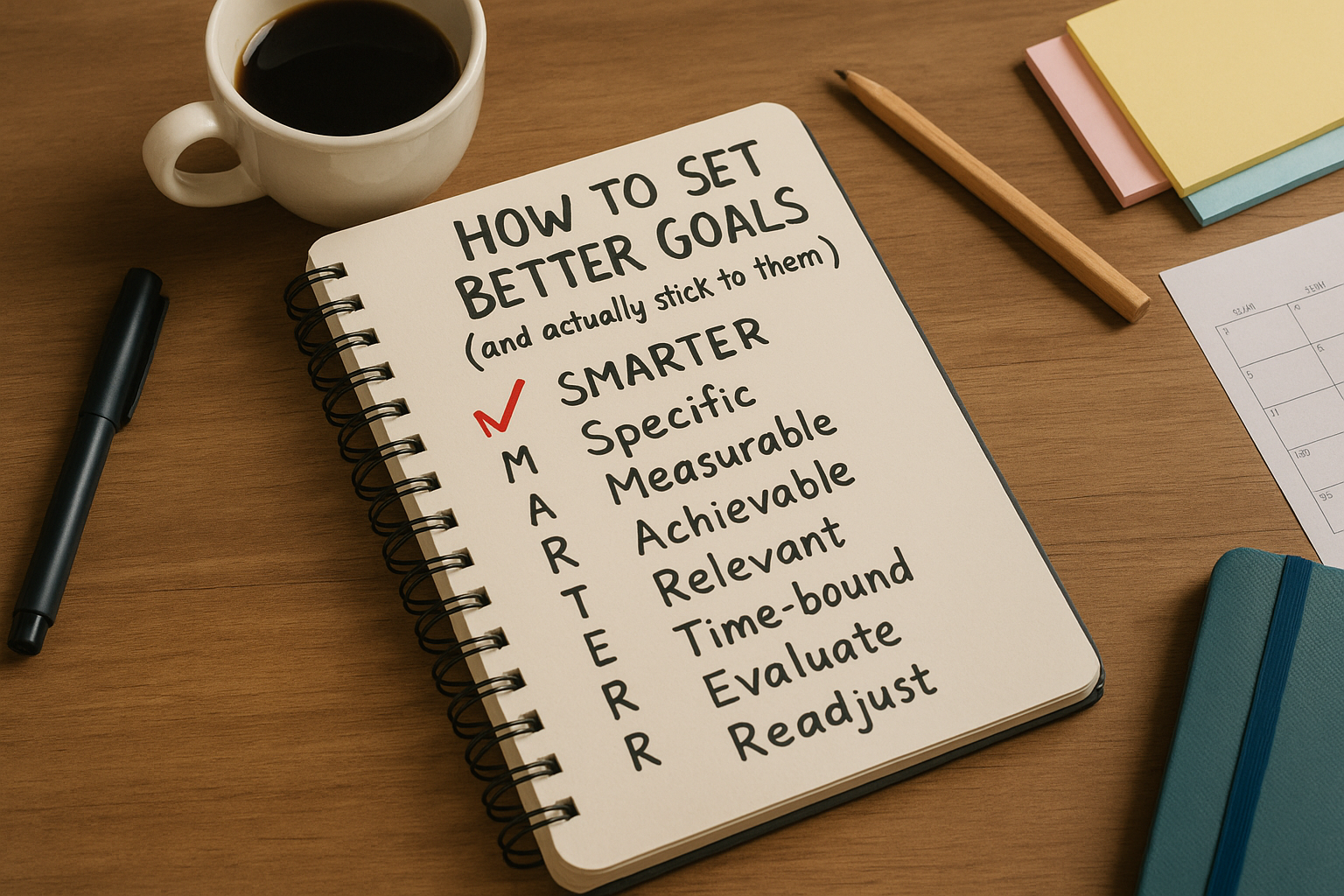Setting goals is easy—sticking to them is the hard part. Many people start with excitement but lose momentum within weeks (or days). The problem isn’t motivation. It’s often how the goal is set.
In this article, you’ll learn how to create clear, actionable goals and develop the mindset and system needed to follow through.
Why Most Goals Fail
Common reasons include:
- Vague or unrealistic targets
- Lack of a clear action plan
- All-or-nothing thinking
- No accountability or progress tracking
- Ignoring the deeper why behind the goal
The good news? With a few shifts in strategy, your goals can go from hopeful ideas to real, consistent progress.
1. Use the SMARTER Framework
SMART goals are popular for a reason—but we can take it a step further by making them SMARTER:
| Letter | Meaning |
|---|---|
| S | Specific |
| M | Measurable |
| A | Achievable |
| R | Relevant |
| T | Time-bound |
| E | Evaluate regularly |
| R | Readjust when needed |
Example:
Instead of:
❌ “Get in shape”
Try:
✅ “Work out 3x/week for 30 minutes, track in app, review progress every Sunday”
2. Focus on Systems, Not Just Outcomes
Goals are results. Systems are the processes that lead to those results.
If your goal is to write a book, your system is “write 500 words every morning at 8 a.m.”
If your goal is to get fit, your system is “meal prep Sundays + train 3x/week.”
Consistency in your system creates momentum—even when motivation fades.
3. Connect Each Goal to Your Identity
Ask:
Who do I need to become to reach this goal?
Want to save more money?
Become someone who tracks expenses.
Want to build confidence?
Become someone who speaks up and practices self-respect daily.
Shift from “I want to do ___” to “I am the kind of person who ___.”
Identity change sustains action.
4. Break Big Goals Into Tiny Steps
Overwhelm kills progress. Break your goals into micro-actions:
- Daily: What small thing can I do today?
- Weekly: What milestone will I hit this week?
- Monthly: What needs to shift or adjust?
If the task feels too big, make it smaller—until it feels doable.
Progress builds through motion, not perfection.
5. Track Progress Visually
Seeing your progress keeps your brain motivated. Try:
- A habit tracker
- Progress bars
- Checklists
- Journal entries
- A calendar with “X” marks for each day you show up
Don’t underestimate the power of small visual wins.
6. Schedule Regular Check-Ins
Life changes. So should your goals.
Set a weekly or monthly time to:
- Review what’s working
- Reflect on what’s draining
- Adjust your pace, strategy, or target
- Celebrate wins (even small ones)
You’re not failing if you change your approach—you’re adapting, and that’s powerful.
7. Build in Accountability
Don’t go it alone. Share your goals with:
- A coach
- A friend or partner
- An accountability group
- A journal or blog (even private)
Knowing someone (or something) is tracking your progress increases follow-through.
Final Thought: Small Goals. Clear Steps. Big Change.
You don’t need more motivation—you need a system that supports your momentum.
Start with one meaningful goal. Make it SMARTER. Break it into tiny actions. Track and adjust. Align it with the person you want to become.
That’s how real change happens—not overnight, but every day.

